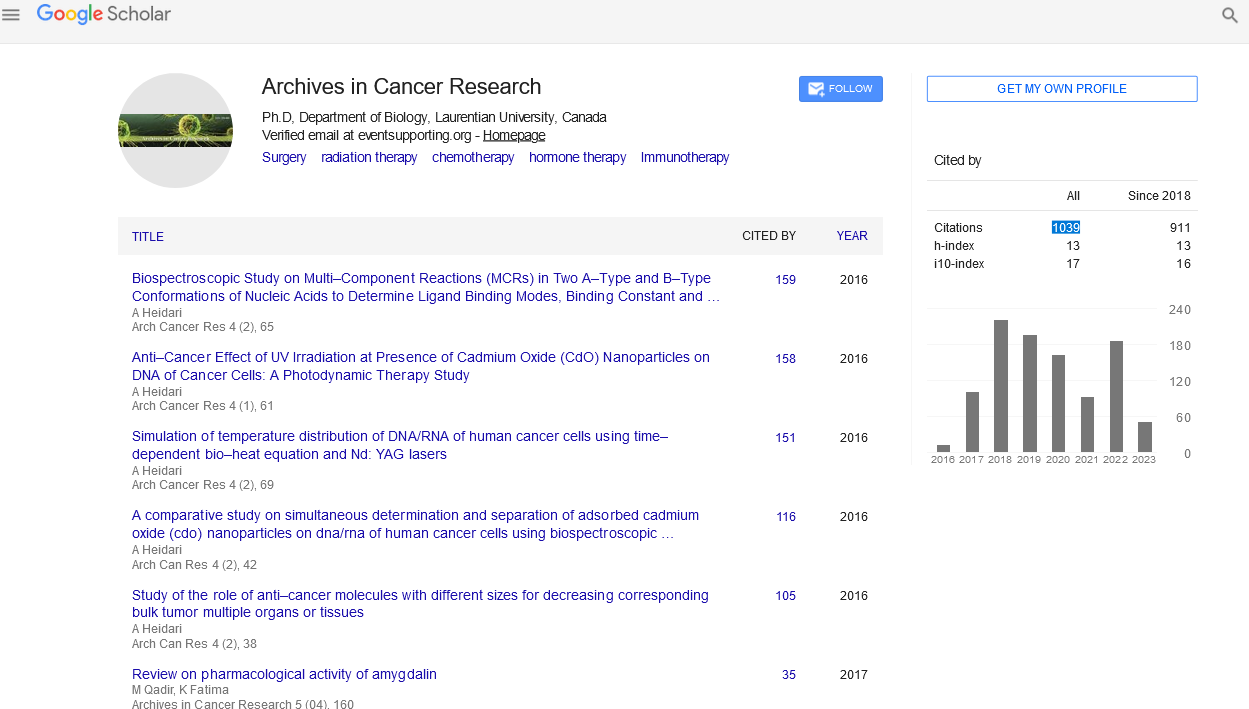Abstract
The leading factor in cancer patient mortality, metastasis occurs when cancer
cells spread from a primary tumour location and colonise an additional organ.
For 70–80% of patients with metastatic breast cancer, cancer cells prefer to
metastasize to bone tissue. They can cause bone disintegration (osteolysis) or
tissue creation through a process known as osteoplastic metastasis. Invasion of
the skeletal environment by metastatic disease causes excruciating pain, a higher
risk of fracture, compression of the nerves, and hypercalcemia. The coordinated
actions of osteocytes, osteoblasts, and osteoclasts in healthy bone regulate bone
tissue composition and structure and guarantee a continuous remodelling process
in response to mechanical cues brought on by skeletal loads .To comprehend crack
defencelessness following metastasis, bone mineral thickness (BMD) investigation
and mechanical appraisal have been led to portray bone tissue from patients with
bone metastases. Miniature CT examinations of the femoral diaphysis of patients
with blended disease metastases (lung, bosom, prostate, 53-78 years of age)
uncovered essentially diminished mean BMD in cadaveric cortical bone in patients
with metastases. Mechanical tests were performed on persistent cortical bone
examples with metastatic sores and contrasted with malignant growth free bone
areas which uncovered fundamentally bring down Young's modulus, yield strength
and extreme strength under pressure, as well as lower Young's modulus under
strain.
Keywords
osteocytes, osteoblasts, sarcoma, osteoplastic metastasis
Introduction
Metastasis happens once cancer cells migrate from a primary
tumor website and colonise a secondary organ, and is that
the primary reason for mortality in cancer patients .Cancer
cells favour metastasis to bone tissue for 70–80 you look
after advanced carcinoma patients and might result in bone
destruction (osteolysis) or tissue formation by a method referred
to as osteoblastic metastasis pathologic process invasion of the
skeletal setting ends up in severe pain, multiplied fracture risk,
nervous.
In healthy bone the coordinated activities of osteocytes,
osteoblasts, and osteoclasts govern bone tissue structure and
composition, and guarantee a relentless remodelling method in
response to mechanical cues thanks to skeletal loading .Paget's
‘Seed and Soil’ theory suggests that cancer cells migrate to bone
tissue thanks to its simply manipulated remodelling method
and enticing physical properties. tumor cells initial arrive inside
the bone marrow EW, a mechanosensitive tissue that homes
osteoblasts and osteoclasts and a supply of mechanobiological
cues for normal bone remodelling before tumor cells ultimately
adhere to the bone tissue surface throughout bone metastasis,
incursive tumor cells disrupt the traditional bone remodelling
method over time by cathartic growth factors, most notably
PTHrP, that activates osteoclasts to collaborate and reabsorb the
bone matrix and cathartic chemotactic stimuli and extra growth
factors. Growth factors and cytokines, hold on inside the bone animate thing matrix (ECM) and free upon biological process,
square measure key attractants for incursive carcinoma cells, and
facilitate more tumor cell proliferation .This method of tumor
cell proliferation, bone cell biological process and osteoblastic
metastasis is thereby perpetuated in an exceedingly ‘vicious
cycle’ of cancer [1-5].
One study investigated bone tissue when MDA-MB-231 carcinoma
cells were injected into the duct gland fat pads of feminine
BALB/c mice, and confirmed via light imaging that pathological
process cells were gift within the trabeculate bone region of the
proximal tibias seven weeks post-inoculation. Moreover, during
this study X-ray scattering analysis unconcealed considerably
shorter HA crystals and large-area Raman imaging incontestible
slashed mineral crystallinity, within the tibiae of those mammaryinoculated
mice when put next to healthy controls at this 7-week
time purpose, that was projected to point immature bone
mineral vaccination of triple-negative 4T1 cells into the duct
gland pad of BALB/c immunocompetent mice leads to primary
tumor formation inside one week post-inoculation and includes
a reported 100% incidence of metastasis to bone tissue 3–4
weeks post-inoculation, confirmed by H&E histologic staining
The objective of this study was to research changes in bone mass
and microarchitecture, mineral content and Nano-mechanical
properties of bone tissue that arise upon carcinoma pathological
process cell invasion, by high-resolution micro-CT imaging associated
nanoindentation analysis of bone tissue from an immunocompetent
BALB/c mouse model inoculated with 4T1 carcinoma cells within
the duct gland fat pad, and relate these findings to the temporal
development and site of the first tumor mass.
Discussion
This study reveals temporal changes in bone microarchitecture,
mineral content associated Nano-mechanical properties native
and distal to carcinoma pathologic process tumours elicited in
an immunocompetent BALB/c mouse model inoculated with
4T1 carcinoma cells within the exocrine gland fat pad. This can
be the primary study to directly compare changes in bone tissue
material properties upon carcinoma metastasis, each before
and following the event of osteolysis lesions victimization an
equivalent immune competent animal model. Additionally, our
analyses were conducted in 2 distinct proximal and distal regions
in femurs of each tumour-bearing and non-tumour-bearing
long bone among equivalent unwellness animals, permitting
a comprehensive understanding of the impact of neoplasm
presence on ensuing changes within the bone mechanical
atmosphere. Moreover, because of the non-destructive nature
of micro-CT, 3D bone mineral content analysis and mechanical
testing was conducted on equivalent thighbone samples, that
isn't doable once utilising backscattered lepton imaging (BSE)
or Raman spectrometry ways. The results from this study reveal
no raw osteocytes destruction by three weeks post-inoculation,
however fibrous tissue cutting and raised bone mineralisation
counsel early compensative response to carcinoma pathologic
process invasion of bone tissue. Upon raw osteolysis destruction
at the later time purpose of half-dozen weeks, vital decreases in
bone mineral content and tissue properties occurred throughout
each the ipsilateral and contralateral bones of the pathologic process animals. These results reveal the time-dependant and
spatial nature of changes in bone tissue, and specifically reveal
that bone tissue composition is altered before the event of
raw pathologic process lysis, native and distant from the first
neoplasm web site. Such changes discovered during this study
might arise either as a result of neoplasm-derived growth factors
discharged upon the arrival of disseminated tumour cells, or may
be a mechanobiological mineralisation response by bone cells in
regions of elevated strain, as mentioned very well below [6-10].
Some limitations to the present study need thought. Firstly, skeletal
responses to pathologic process invasion might dissent within
the mouse model from human patients because of biological,
anatomical, and system variations. However, mice exhibit similar
bone morphological changes throughout ageing to humans and
therefore the 4T1-BALB/c mouse model systematically produces
bone tissue metastasis and isn't prone to an equivalent degree
of subject variation as arises in human studies. Secondly, solely
2 time points were chosen for this study and later time points
weren't enclosed, as a result of by half-dozen weeks raw lysis was
already established, and nine weeks post-inoculation is rumored
to exceed the humane end of mouse pathologic process models
because of high risk of fracture failure.
Pre-clinical creature models have empowered the investigation of
changes in bone tissue arrangement and Nano scale mechanical
(Nano-mechanical) properties after metastasis by bosom
malignant growth cells. Three weeks following intracardiac
vaccination of HeLa cervical disease cells in female euthymic
rnu/rnu rodents (5 a month and a half old) trabecular vertebral
bone tissue introduced osteocytes bone sores of diminished
crystallinity, precious stone size and collagen quality as recognized
by Raman Spectroscope [11-15].
Conclusion
Temporal associate degree abstraction analysis of bone
physical properties upon carcinoma cell pathologic process
invasion provides an understanding of the changes in bone
microarchitecture and tissue composition. Comprehensive
analysis of bone mineralisation and Nano-mechanical properties
at three weeks post-inoculation indicates early bone tissue
changes in response to carcinoma pathologic process invasion.
Within the long run, diminished mineral content and lower
bone tissue stiffness in tumour-loaded femurs occurred upon
osteocytes destruction. These changes could alter the mechanical
setting of each the bone and growth cells, and thereby play a job
in perpetuating the cancer vicious circle throughout carcinoma
metastasis to bone tissue.
Acknowledgement
I would like to thank my professor for his support and
encouragement.
Conflict of Interest
The authors declare that there is no Conflict of interest.
Findings to the temporal development and site of the first tumor
mass.





